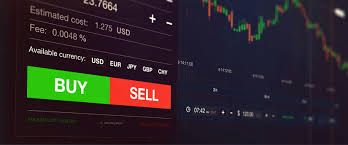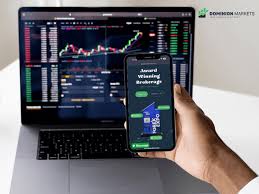
How to Open a Forex Trading Account: A Beginner’s Guide
Forex, or foreign exchange, is the largest financial market in the world. If you’re considering venturing into this exciting field of trading, the first step is to open a Forex trading account. Whether you’re a complete novice or someone with some experience in trading, this guide will provide you with the steps and knowledge necessary to get started. For a comprehensive overview of some of the best options available, check out how to open a forex trading account Top LATAM Forex Platforms.
1. Understanding Forex Trading
Forex trading involves buying and selling currencies on a global scale. This market operates 24 hours a day, five days a week, and is available for trading at any time. Prices change based on market conditions, economic news, and geopolitical events. Before opening an account, familiarize yourself with key concepts such as currency pairs, pips, leverage, and margin. Knowledge of these terms will give you a foundation upon which to build your trading strategy.
2. Choosing the Right Forex Broker
Your choice of Forex broker is crucial to your trading success. Look for a broker who is regulated by a reputable authority and offers a trading platform that fits your style. Here are some factors to consider when selecting a broker:
- Regulation: Ensure the broker is regulated by a recognized authority (e.g., FCA in the UK, SEC in the US).
- Trading Platform: Choose a trader-friendly platform with essential tools for analysis and execution.
- Spreads and Commissions: Look for competitive spreads and a transparent fee structure.
- Leverage Options: Understand how leverage works and choose a broker that offers leverage suitable for your risk tolerance.
- Customer Support: Check the availability of customer support and whether it meets your needs.
3. Opening Your Forex Account
Once you have selected a broker, the next step is to open a trading account. The process typically involves the following steps:
- Application Form: Complete the application form on the broker’s website. You will need to provide personal information, including your name, address, contact details, and financial information.
- Identity Verification: Most brokers require identity verification to comply with regulations. You may need to upload documents such as a passport or driver’s license, along with proof of address like a utility bill.
- Account Funding: Once your account is verified, you’ll need to fund it. Brokers offer several payment methods, including credit cards, bank transfers, and e-wallets. Choose the one that suits you best.
- Platform Setup: Download the trading platform and install it. Familiarize yourself with its features and layout. Most brokers provide tutorials and demo accounts to help you learn how to use the platform effectively.
4. Understanding the Trading Platform
Your trading platform is your primary interface for trading. It allows you to execute trades, analyze the market, and manage your accounts. Key features to look for include:

- Charting Tools: Access to advanced charts with various technical indicators to assist in your analysis.
- Order Types: Understand the different types of orders available, including market orders, limit orders, and stop-loss orders.
- Risk Management Tools: These tools help you manage your risk and protect your capital.
- Customization: Customize the platform to suit your preferences, which can enhance your trading experience.
5. Developing a Trading Strategy
No successful trader operates without a clear strategy. Here are the essential components of a solid trading strategy:
- Market Analysis: Decide whether you will use technical analysis (chart-based) or fundamental analysis (news and economic reports) or a combination of both.
- Risk Management: Determine how much of your account you are willing to risk on each trade. A common rule is to risk no more than 1-2% of your capital per trade.
- Trading Plan: Create a detailed plan that outlines your trading goals, entry and exit strategies, and performance evaluation methods.
- Continuous Learning: Always keep learning. The Forex market evolves constantly, and successful traders stay informed about market changes and trends.
6. Practicing with a Demo Account
Most brokers offer demo accounts that allow you to practice trading without risking real money. This is an excellent way for beginners to become familiar with the trading platform, test their strategies, and gain confidence before trading live. Use the demo account to:
- Experiment with different trading strategies.
- Learn how to use various trading tools offered by the platform.
- Get comfortable with reading charts and recognizing trade setups.
- Understand how emotions affect trading decisions.
7. Moving to a Live Account
Once you feel confident with your trading, it’s time to transition to a live Forex account. Ensure that you start with a trading plan that you have practiced and is ready for execution. Here are some tips for live trading:
- Start Small: Begin with smaller trades to manage your risk as you adjust to trading with real money.
- Stay Disciplined: Stick to your trading plan and avoid making impulsive decisions based on emotions.
- Review and Adjust: Regularly assess your trading performance. Adjust your strategies as necessary based on your observations.
Conclusion
Opening a Forex trading account is the first crucial step towards becoming a successful trader. By understanding the dynamics of Forex trading, choosing the right broker, and practicing consistently, you can develop the skills necessary for trading success. Remember to remain patient, disciplined, and willing to learn throughout your trading journey.
